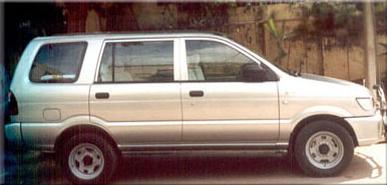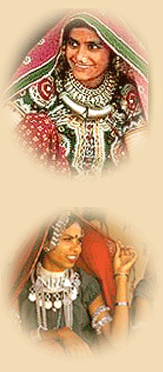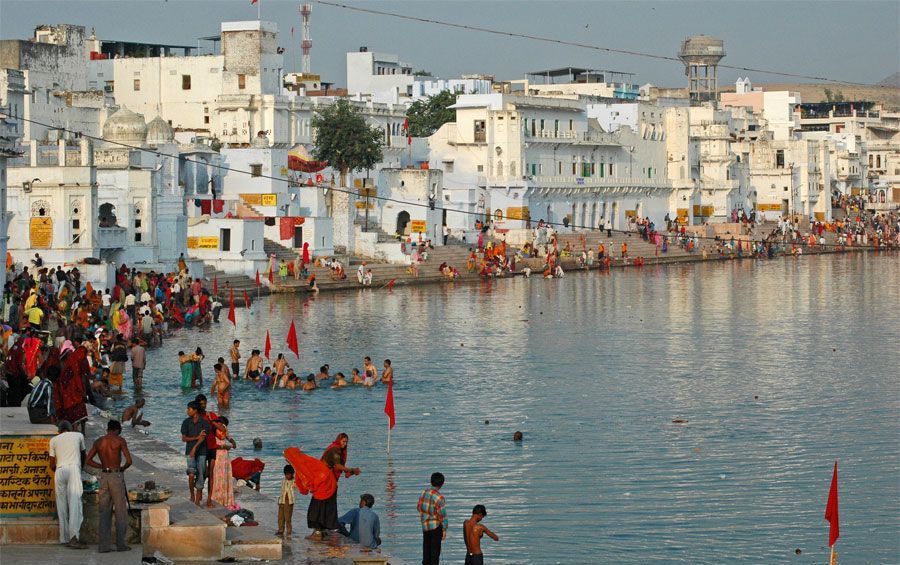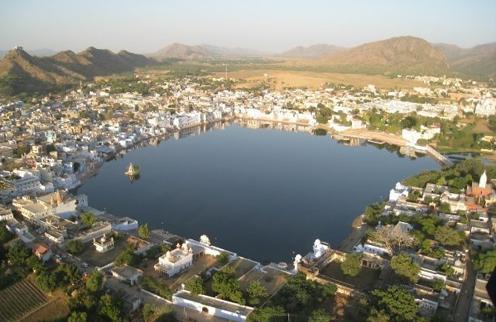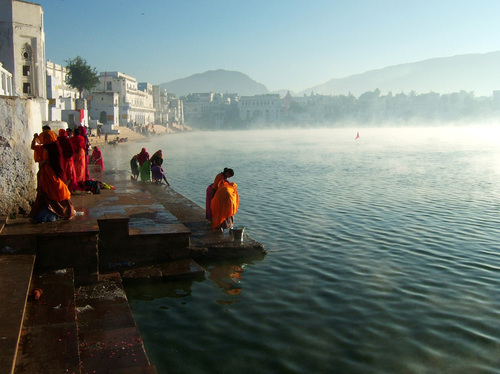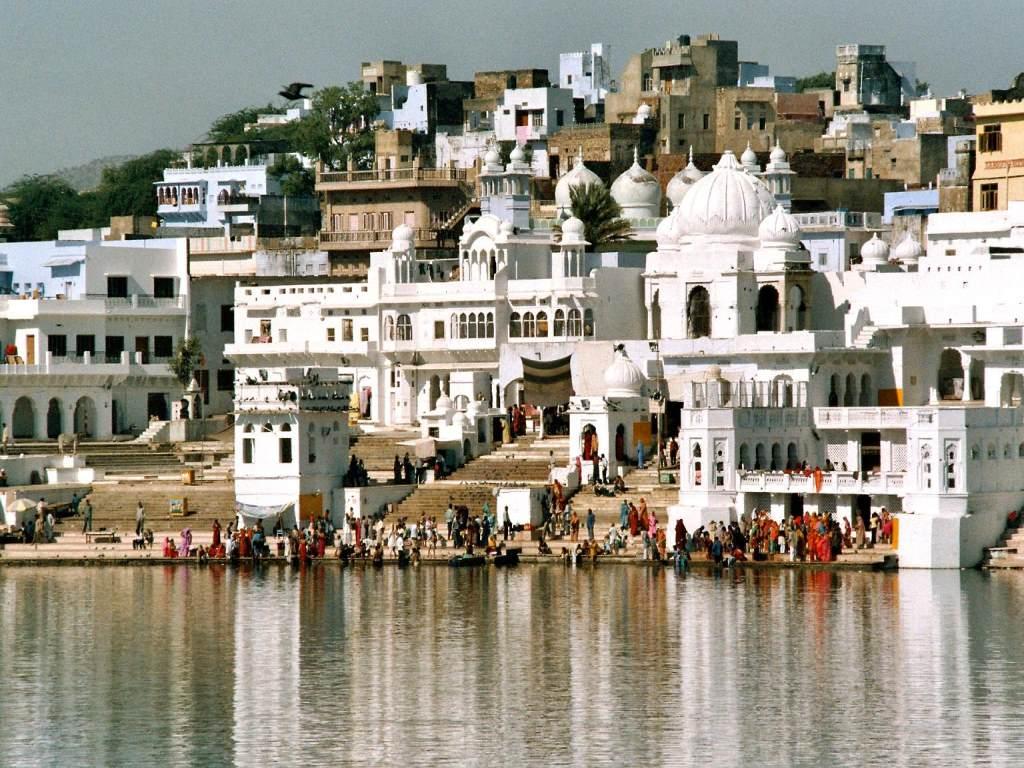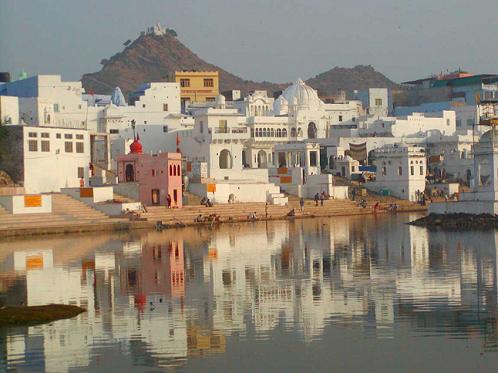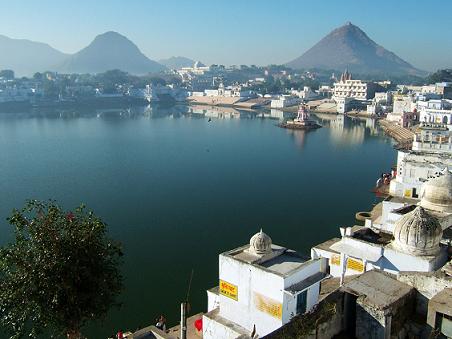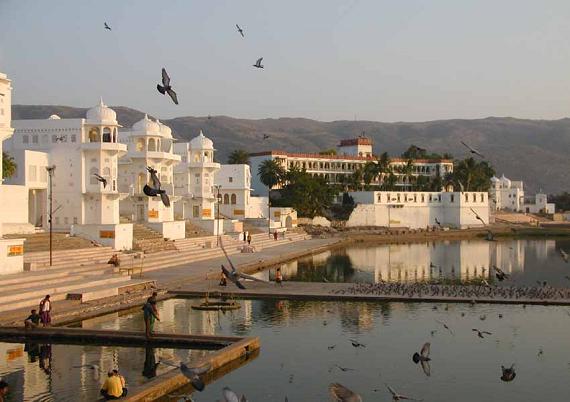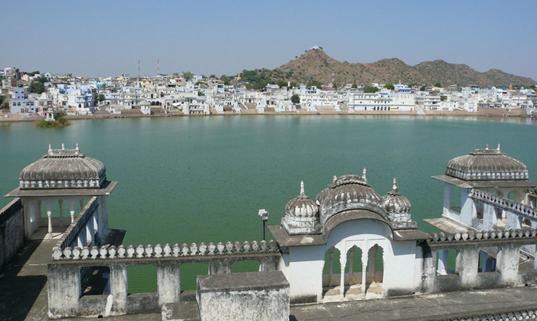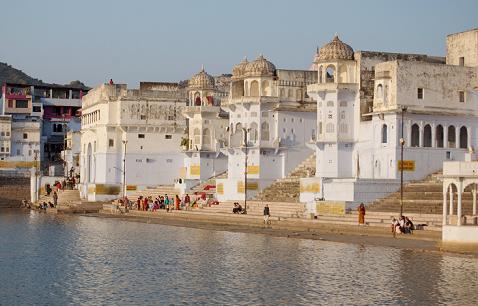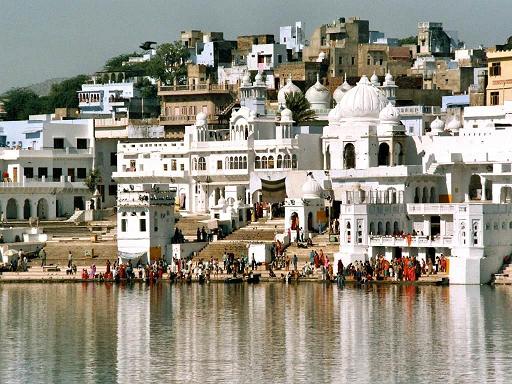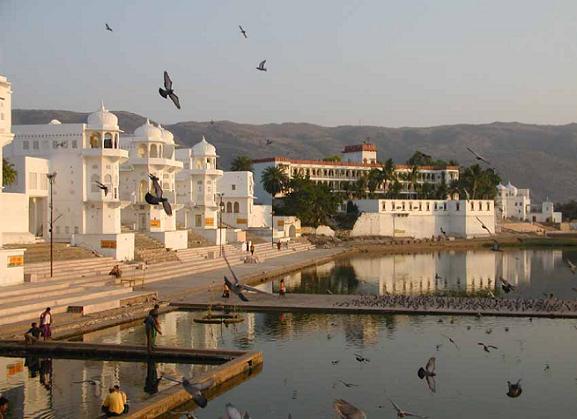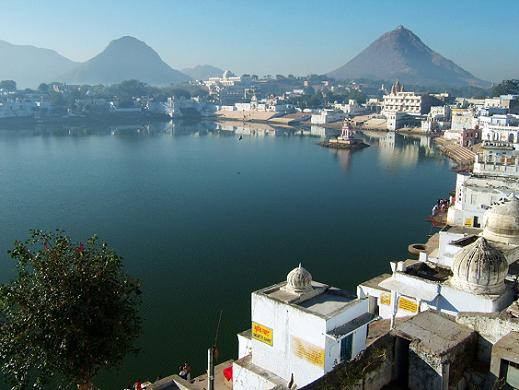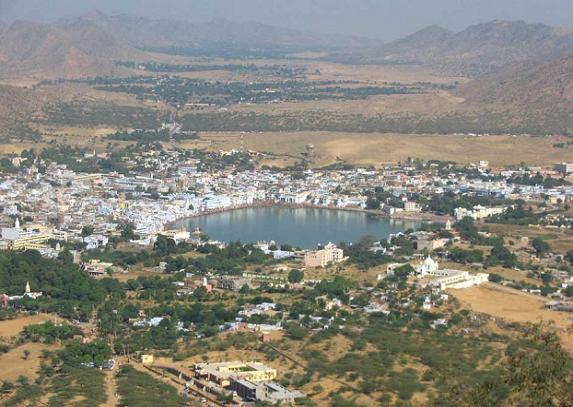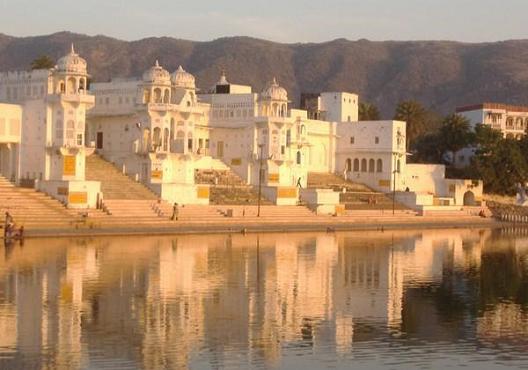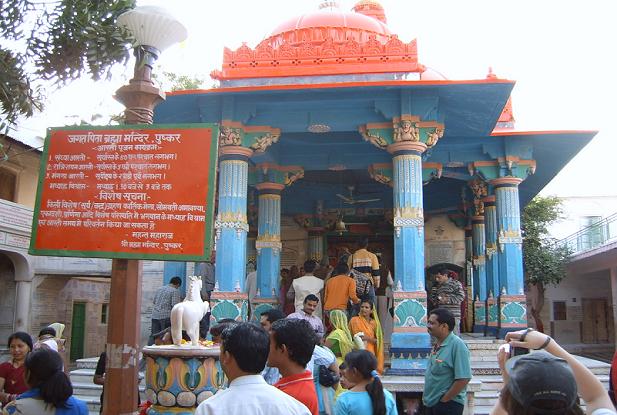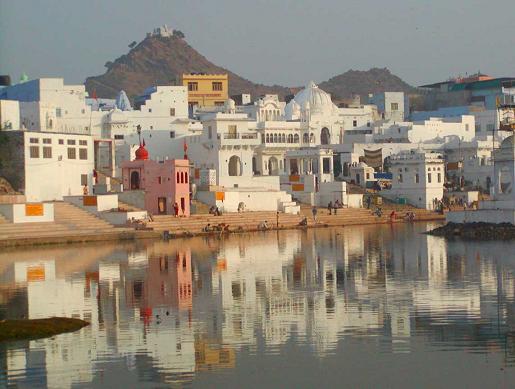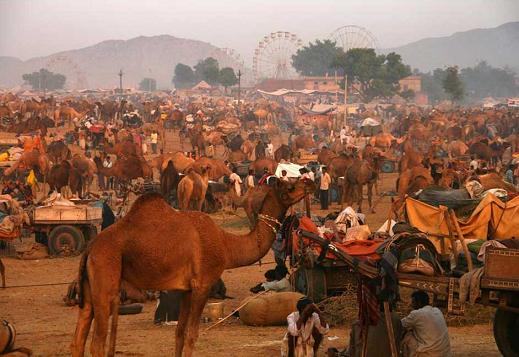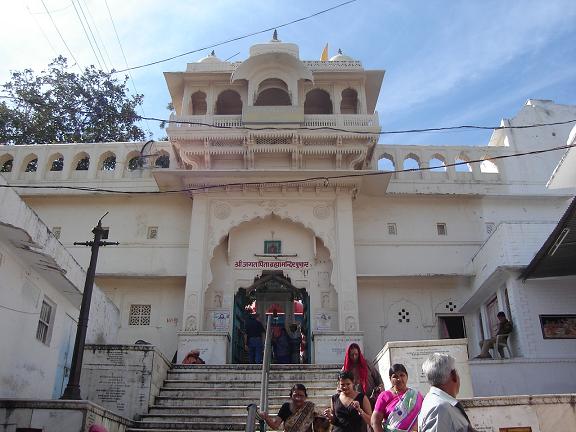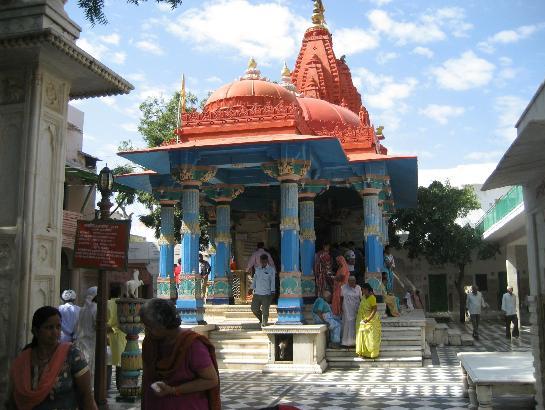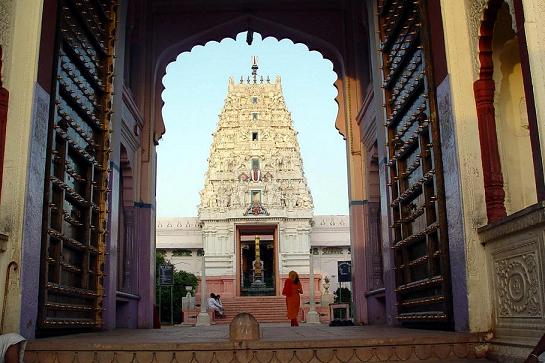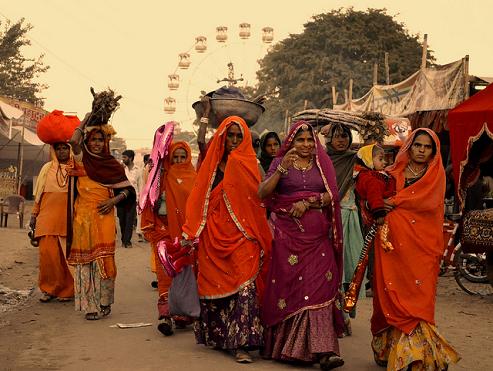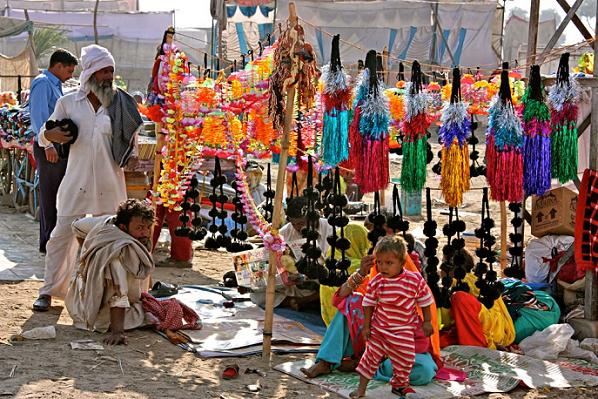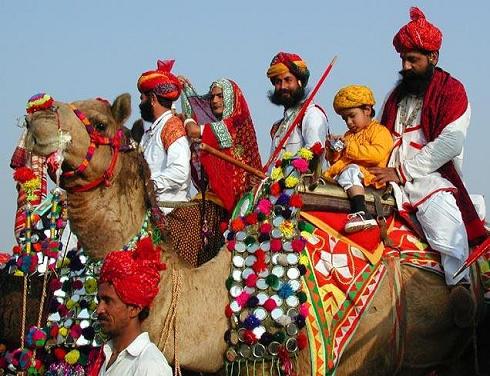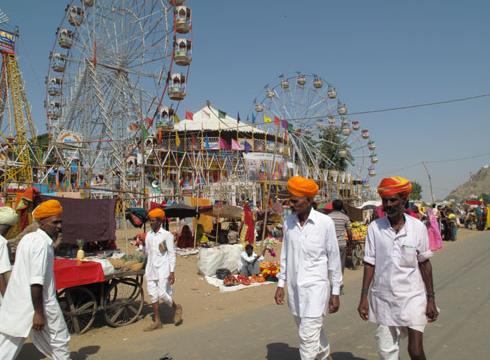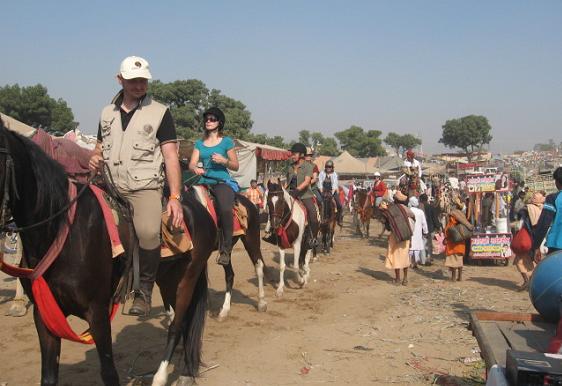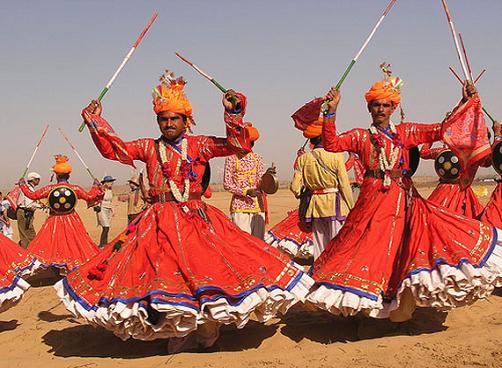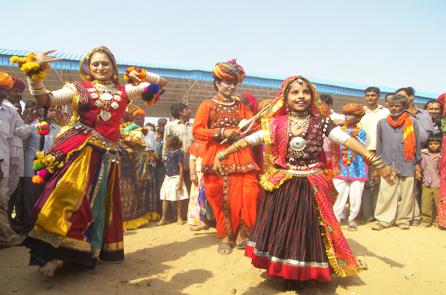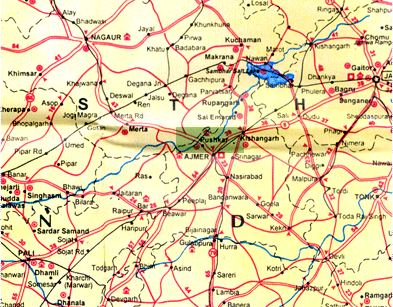Raja Man Singh of Amber |


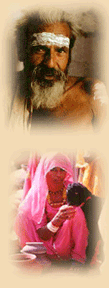





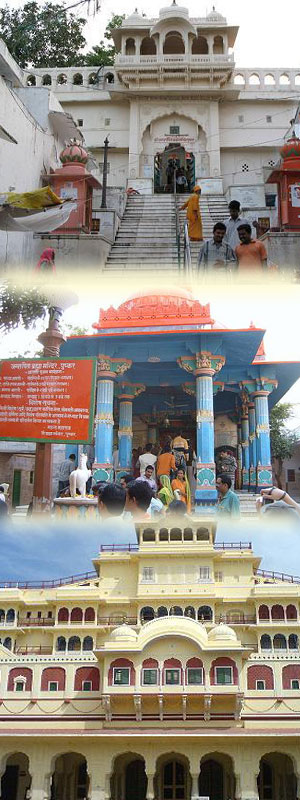
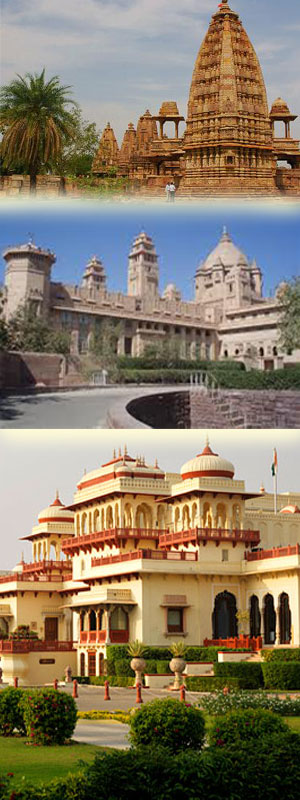
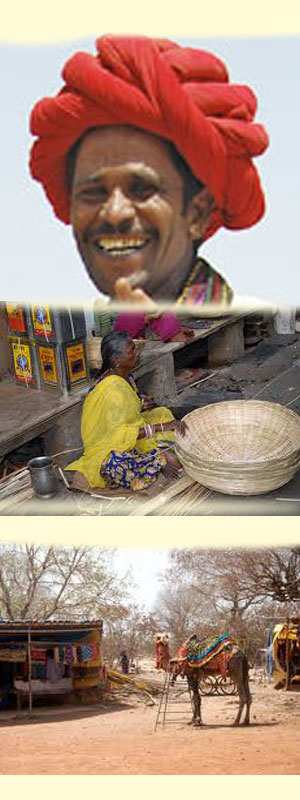
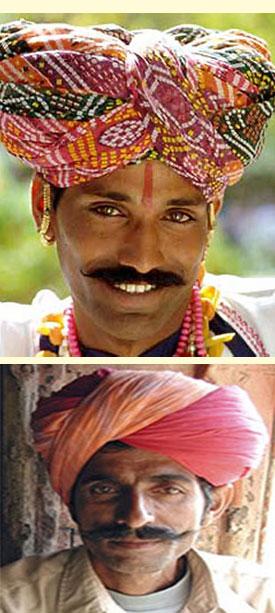
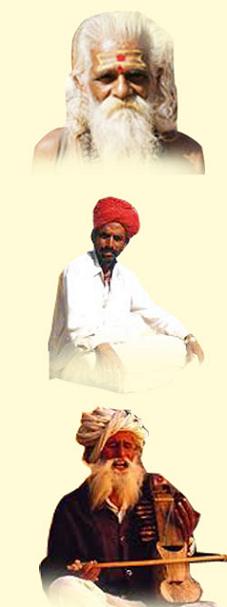

 |
 |
|
 |
|
 |
|
 |
|
|
|
|
|
|
|
Raja Man Singh of Amber |
|
The Mughal aristocracy played a
vital role in the establishment of the Mughal Empire on a firm footing. It not
only contributed to the strengthening of the empire but it also helped in
setting up a sound Mughal administration. Raja Man Singh of Amber was an
important member of Mughal aristocracy. The history of Akbar’s reign will
rather be incomplete without a detailed knowledge of the contributions of Raja
Man Singh not only to expansion of the Mughal Empire but also to the
enrichment of the art and architecture of the period. |
|
|
|
|
Parentage of Raja Man Singh |
|
There was a wide
difference of opinion amongst historians about the parentage of
Raja Man Singh. Some of the contemporary Muslim historians were
of the opinion that Man Singh was the son of Raja Bhagwan Das
while others believed that Raja Bhagwant Das was the father of
Raja Man Singh. The European historians like V.A. Smith and H. Blochman affirm that Man Singh was the adopted son of Raja
Bhagwan Das. It has now been conclusively proved on the basis of
all the relevant sources – Persian, Sanskrit, Hindi, numismatic
and epigraphic – that Man Singh was the eldest son of Raja
Bhagwant Das and grandson of Raja Bharamal of Amber. |
|
|
|
|
Early life of Raja Man Singh
|
|
Raja Man Singh was
born on Sunday, Paus Budi 13 V.S. 1607 i.e. 21st December, 1550
A.D. His mother’s name was Rani Bhagwati Pawar, the chief wife
of Raja Bhagwant Das. On the birth of Kunwar Man, the
astrologers sounded an ominous note that the newly born baby was
likely to fall in trouble on account of the influence of some
evil stars. They further advised the Raja that in order to ward
off the danger, special arrangements for the Kunwar’s stay
should be made at a place away from Amber for a period of twelve
years. Thereupon Raja Bharamal got a palace built for Man Singh
at Muzzamabad which lay forty miles south of Amber. Kunwar Man
lived in the new palace at Muazzamabad for a period of twelve
years under the guardianship of his mother. In 1562 Kunwar Man
returned to Amber and his arrival coincided with the marriage of
the daughter of Raja Bharamal with Akbar. |
|
|
|
|
Kunwar Man Singh in Mughal
Imperial Service |
|
Kunwar Man Singh
entered the Mughal Imperial Service in 1562 at an early age of
twelve. He received military training under the guidance of
Emperor Akbar and became well – versed in Mughal technique of
warfare. Kunwar Man Singh along with his father Bhagwant Das
took prominent part in the siege and conquest of Ranthambore by
Akbar early in 1569 A.D. Both Man Singh and Raja Bhagwant Das
rendered commendable help to Akbar in the battle of Samal
(December, 1572) which was fought against Mirza Muhammad Hakim
of Kabul and also in the conquest of Surat (26th February 1573
A.D.). Kunwar Man Singh along with other Mughal generals like
Shah Quit Khan, Mahram Murat Khan conquered and looted the
territories of Dungarpur (74 miles from Ahmedabad) in April,
1573. When Akbar started for the Eastern Provinces in order to
suppress the rebellion of Daud Khan in the closing months of
1574 the took with him a galaxy of trusted generals of whom Abul
Fazi has named nineteen and amongst them the names of Raja
Bhagwant Das and Kunwar Man Singh occupy the first and the
second place. Thus, the father and the son played an important
part in suppressing the turbulent Afghans as a result of which
Daud Khan had to flee towards Bengal. |
|
|
|
|
Kunwar Man Singh versus
Maharana Pratap |
|
Up till now Kunwar
Man Singh played a subordinate role in the cross of imperial
politics and therefore, he did not attract the special attention
of contemporary Muslim historians. It was in the battle of
Haldighati that Kunwar Man Singh was entrusted with an important
assignment which at once brought him into prominence. It was in
the battle that Man Singh got an opportunity to show his
wonderful organizing capacity and military genius. Thus, the
battle of Haldighati may be considered as a turning point in the
career of Kunwar Man Singh – The battle of Haldighati was fought
between the Mughal army under the command of Kunwar Man Singh
one on side and the Rajputs of Mewar headed by Maharana Pratap
on the other. |
|
|
|
|
Causes of the battle of
Haldighati |
|
As regards the
causes of the battle of Haldighati, different writers have
advanced different reasons. Abul Fazi observers; “As the
disobedience and the presumption of the Rana, as well as his
deceit and dissimulation had exceeded all bounds. His majesty
addressed himself to his overthrow”. Colonel Tod in his Annals
and Antiquities of Rajasthan narrates an incident which
according to a few may be used to be immediate cause of the war.
This incident is based on Rajput tradition. According to in
Kunwar Man Singh visited Udiapur on his way back from Gujarat in
the middle of 1573 because courtesy demanded that he should pay
his respects to Maharana Pratap who was the doyen of the Rajput
rulers of Rajasthan while passing through his territories.
Though he was warmly received but curtly treated on the bank of
Udaisagar lake. This very much offended the vanity of Kunwar Man
Singh and he took a vow to revenge this insult. The Udaisagar,
incident might have been a contributory cause of the battle but
the real causes were something else. Emperor Akbar was
successful in winning over a large number of Rajput states by
his policy of matrimony and friendship and this unavailing, even
by extending (hearts and coercion – But neither of these
policies could bring Rana Pratap to the fold of the Mughal
Emperor. Akbar was a shrewd politician and he knew very well
that unless Maharana Pratap was persuaded or coerced to submit,
his policy of fraternizing with the Rajputs and making them a
bulwark of the growing Mughal Empire was doomed to failure. But
Maharana was made of a different stuff. He was prepared to
sacrifice his life at the alter of Rajput freedom but was not
ready to accept the over lordship of the Mughals. The loss of
Chittor was still fresh in his memory and he was not in the
least inclined to come to terms with the imperialists who had
deprived him of his dear motherland. Besides, the Maharana was a
proud orthodox Rajput chief who hated the Mughal Emperor very
bitterly because the latter had polluted the Rajput blood by
contacting matrimonial alliance with them. Thus, the Maharana
stood like a stumbling block to the Emperor’s scheme of annexing
the whole of Rajasthan to his Empire. Thus, a clash between the
two was inevitable because they were poles asunder in
championing their respective causes. The fight between the two
lay in “the logic of history”. |
|
|
|
|
Man Singh as the Chief
Commander of the Mughal Army |
|
One of the main
reasons for the appointment of Kunwar Man Singh as the Chief
Commander of the Mughal army sent against Maharana Pratap was
his personal qualities – wisdom, courage, resourcefulness, able
generalship and wonderful organizing capacity. Besides, Akbar,
who was a shrewd observer of human nature, knew it very well
that the Kachhwaha army, famous for its gallantry and bravery,
would strive its utmost to se their Kunwar victorious even
against Maharana Pratap who was the most respected ruler of
Rajputana – Besides, Akbar knew it very well that the Mughal
army was going to face a Rajput ruler who was far different from
all others whom it had met so far since the Maharana was
regarded at the hero and pride of the Rajput community of
Rajasthan. The Mughal Emperor rightly thought that if a Muslim
was put in charge of the invading army, the Kachhwahas might not
cooperate in defeating the essence of the human nature, Akbar
new that as cordial relation develop sooner and more readily
between men of the same race and faith, so also brother is most
bitter against brother on the field of battle. Hence Kunwar Man
Singh was appointed as the chief commander of the Mughal army
“to wield the sword of Islam.” Further, by appointing Man Singh
as the leader of the Imperialist army, Akbar wanted to tease the
Sisodia Chief who was esteemed as the flower of Rajput chivalry. |
|
|
|
|
Battle of Haldighati (18
June, 1576 A.D.) |
|
The Imperial army
led by Kunwar Man Singh marched from Ajmer towards Gogunda on
April 3,1576. On his way the Kunwar encamped at Mandalgarh (75
miles south of Ajmer and 25 miles north of Chittor) for about
two months in order that all the Mughal generals might join him
there. Kunwar Man Singh marched from Mandalgarh to Gogunda in
early June, 1576. Gogunda was very close to Haldighati and was
about 16 miles north – west of Udaipur. The Haldighati was so
called because of the yellow colour of its soil – Haldighati was
at the base of the neck of a mountain - which shut up the valley
and rendered it almost inaccessible. By April, 1576, Maharana
Pratap along with his army moved to Khamnaur, a village situated
at the entrance to the pass of Haldighati. Kunwar Man Singh had
with his 5000 troops whereas Maharana Pratap had not more than
3000. On the. 18th June, 1576 the two armies met in the village
of Khamnaur which was at the mouth of Haldighati. The battle of
Haldighati was indeed a very fierce battle in which hundreds of
men on both sides were killed; However, the battle ended in
victory of the Imperialists. The Maharana left the battle –
field in sheer disgust. The Imperialists did not pursue their
enemies under the orders of Kunwar Man Singh. The reason for
this was that the main object of this war had been realized. The
Kunwar’s chief aim was to humble the Rana by infecting a
crushing defeat on him but he never wished to harass or torture
him since the Rana still occupied a position of respect not only
in his own eyes but also in the eyes of the Kachhwaha Rajputs.
This accounts for the fact that immediately after the cessation
of the war the Kunwar forbade the Mughal army to pursue the
Maharana’s soldiers which might embarrass them. The Kunwar had
to incur the displeasure of the Emperor for sometime on account
of adopting this non – harassing policy but Man Singh bore the
displeasure of the Emperor patiently and never repented what he
had done. However, the displeasure of the Emperor was short –
lived and the Kunwar was soon admitted into his favour.
Kunwar Man Singh was next ordered by the Emperor to suppress the
rebellion of Khhichiwara (It is situated to the south of the
state of Kota). The Kunwar proceeded from Amber in that
direction with a strong contingent. On the way he suppressed and
subdued the recalcitrant chiefs who dared to oppose him. Having
established order in that region he set up military outposts
there in order to safeguard the interests of the Mughal Empire.
Next Man Singh marched towards Malwa and conquered the
principality of Oond on the way. The Kunwar established an
efficient administration in Malwa and stamped out all
disaffection in that region. Emperor Akbar was much pleased at
this achievement of Man Singh. He was pleased to confer the
mansab of 3500 on the Kunwar and he was transferred to Kabul
region. Thereafter the field of activities of man Singh and his
Father shifted from Mewar to extreme north and north – west of
India i.e. Punjab, Peshawar and Kabul. |
|
|
|
|
The Role of Man Singh in the
Punjab and North – West Frontier |
|
The deputation of
Man Singh to the Punjab and north – west frontier regions of
India was another milestone on the road to his success. The
Mughal suzerainty in that region was very shaky and the
situation demanded the presence of a man of sterling qualities
and great abilities. These considerations weighed with the
Emperor in transferring Kunwar Man Singh to the Punjab. Man
Singh came to the Punjab along with his father Raja Bhagwant
Singh in April, 1578. For nearly two years (i.e. up to 1580
A.D.) Kunwar Man Singh remained engaged in bringing Kashmir
under Mughal suzerainty and in chastising Sulaiman Mirza who was
a friend of Muhammad Hakim, ruler of Kabul and a great enemy of
Akbar. During these two years Man Singh remained in the Punjab
with his headquarters at Sialkot, the then capital of the
Punjab. In Janurary, 1580 Man Singh was entrusted with the
administration of the North – Western Frontier Provinces. He was
also given charge of the administration of the neighboring
regions of the river Indus. Kunwar Man Singh discharged his
responsibilities quite satisfactorily. In December, 1580 her
inflicted a crushing defeat on Shadman, an Afghan leader and a
great friend of Mirza Muhammad Hakim, ruler of Kabul. Shadman
was killed in the encounter. The defeat and death of Shadman
provoked the attack of Mirza Muhammad Hakim on the Punjab. When
this news reached Emperor Akbar, the latter ordered Man Singh
not to oppose the Mirza openly and to put off a direct
engagement with his since Emperor himself wanted to measure his
strength with his half brother. Consequently Kunwar Man Singh
avoided a direct engagement with the Kabul forces. However,
Mirza Muhammad Hakim was defeated in the middle of 1581 and he
fled towards northern Kabul, Kabul now lay at the feet of Akbar.
Kunwar Man Singh remained in charge of the Indus region till
July, 1585. In the meantime Mirza Muhammad Hakim, ruler of Kabul
died on 30th July, 1585. Kunwar Man Singh was ordered by the
Emperor to proceed at once to Kabul and to bring the people of
that country to the allegiance of the Mughal Emperor. As per
direction Kumwar Man Singh crossed the Indus and reached
Peshawar. The Afghans of that region submitted without any
trouble. He also brought Kabul under his control Thus, Kunwar
Man Singh succeeded in extending Mughal suzerainty over Kabul
also. Emperor Akbar was highly pleased with the glorious deeds
of Man Singh in Kabul and he suitably rewarded him for this. He
was appointed the governor of Kabul and was also entrusted with
the task of suppressing and punishing the Raushanias, an afghan
tribe of the frontier regions. These Raushanias were the
formidable Afghans who often committed highway robberies on the
Khyber Pass and thus made the life of the travelers unsafe. This
assignment, of Man Singh was indeed difficult but he acquitted
himself well in carrying out the trying task entrusted to him. |
|
|
|
|
Death of Raja Bhagwant Das
and the Accession of Man Singh as the Ruler of Amber |
|
But before Kuar Man
Singh could settle himself in Bihar, a great calamity befell
him. His father Raja Bhagwant Das breathed his last in Lahore on
the 13th November, 1589 A.D. The Kunwar became ‘Raja’ Man Singh
after his succession on 14th February, 1590. The coronation
ceremony was held at Amber with great pomp and splendour. Abdul
– Fazi writes that the “Kunwar received the title of Raja” and
the mansab of 5000 from Akbar.
After the coronation was over Raja Man Singh came to Bihar and
engaged himself in establishing a firm and stable administration
in the Subah. First of all he led and expedition against Raja
Puranmal of Gidhaur. The latter dared not fight with the
Kachhwaha chief and surrendered without any fight. He also
presented several elephants and other precious articles. He also
gave his daughter in marriage to Chandrabhan, a brother of Man
Singh. Next he proceeded against Anant Chero of the Gaya
District in the province of Bihar and brought him under control.
Man Singh also subdued the Sayyids of Sambhurpuri of Gaya
district in Bihar. The Raja also founded a new city on the other
side of Phalguni in Gaya town and named it ‘Man Pur’ “the abode
of Raja Man”. Raja Man Singh next crushed the opposition of Raja
Gajapat of Hajipur and forced him to relinquish the
chieftainship. While Raja Man Singh was away suppressing the
recalcitrant zamindars of South Bihar, Kumwar Jagat Singh, the
eldest son of the Raja, successfully defended the northern Bihar
from the onslaughts of two powerful Bengal rebels – Sultan Quli
Qalmaq and Kachewa. The rebels lost their heart and fled away
leaving behind much booty. |
|
|
|
|
Raja Man Singh as the
Governor of Bengal |
|
On the 4th day of
May, 1594 Raja Man Singh left for Bengal to join his post as the
governor of the province. The political condition of Bengal on
the eve of his joining the post as the governor of the province
was hopelessly deplorable. The Mughal suzerainty was seriously
threatened on account of the conspiracies and depredation of the
Afghans who had spread themselves throughout the nook and corner
of Bengal. The Afghans were greatly discontented on account of
their territories being expropriated by the Imperialists in the
wake of Mughal expansion.
The recalcitrant zamindars of Bengal were a further source of
trouble to the Mughal – governor. Those who did not submit to
the Mughal rule in other provinces also came to Bengal and
swelled the ranks of the malcontents and the recalcitrant. Raja
Man Singh was not in the least perturbed by the hopeless state
of affairs in Bengal. On the contrary he proceeded boldly to set
the province in order. He was quite convinced that his greatest
enemies were the Afghans and their suppression was essential for
the establishment of a stable government in Bengal.
Tandah, the then capital of Bengal did not afford a convenient
base for military operations against Afghan rebels. Besides, it
has become unhealthy because of the fact that the river Ganges
had moved away from the city. Moreover, the city had lost its
former glamour on account of an epidemic-which visited Tandah in
1575 and decimated its population. Raja Man Singh instead chose
Rajmahal, which was situated on the bank of the river Gangaes
and provided suitable base for military operations against the
Afghans. Hence the seat of government was removed from Tandah to
Rajmahal in November, 1595 and its name was changed to
Akbarnagar. He built a palace for himself and also erected a
strong rampart, strengthened with bastions, which encircled the
city. He opened a mint and silver, copper and gold coins were
issued from this place.
In December, 1595 he led and expedition against Isa Khan, the
most prominent landlord of Dacca. The Afghans were overawed by
the superior strength of the Mughal army. He built a fort there,
named Salimnagar. In 1596 Raja Man Singh brought the state of
Cooch Bihar under the sphere of Mughal influence. The throne of
Cooch Bihar was hotly contested by a rival claimant named Pat
Kunwar who entered into an alliance with Isa for wresting the
throne from Lakshmi Narayan, the dejure ruler of the state. The
Raja decided to acknowledge the formal supremacy of Emperor
Akbar in order to enlist his armed support against the
formidable Pat Kunwar – Afghan combination. Raja Lakshmi Narayan
offered formal submission to the Mughal Emperor and this was
accepted by Bengal Governor with grace. The alliance was further
cemented by a matrimonial alliance. Raja Man Married Barbhavati,
sister of Raja Lakshmi Narayan. In May 1597, Pat Kunwar was
defeated with great loss of men and material. The extension of
Mughal influence over cooch Bihar offered a convenient base for
strengthening the imperial authority over eastern Bengal.
In the meantime, Isa Khan, the powerful Afghan leader of eastern
Bengal, joined his forces with Pat Kunwar and inflicted crushing
defeat on the imperialists in September, 1597 in the vicinity of
Katrabu (Dacca) in which one of the sons of Man Singh, Durjan
Singh, lost his life. But soon Isa Khan surrendered to Raja Man
Singh and thus Cooch Raja was saved from the peril of the attack
of Cooch – Afghan allies. Isa Khan died in September, 1599. The
death of Isa Khan very much weakened the Afghan cause in Bengal
and Man Singh heaved a sigh of relief at the disappearance of
this Afghan menace. |
|
|
|
|
Death of Jagat Singh in
October 1599 |
|
Soon Raja Man Singh
had to face a great calamity in his life. His eldest son, Jagat
Singh, died of excessive drinking in October, 1599. It was a
severe blow to the Kachhawaha Raja. Jagat was the eldest and the
most obedient of all the sons of Raja Man Singh. Rani Kanakawati
constructed a beautiful marble temple in memory other son in the
western comer of Amber. It is one of the most imposing buildings
of Amber. |
|
|
|
|
Afghan rebellion (1600 A.D.) |
|
Raja Man Singh was
thoroughly disgusted with his life in Bengal. He went to Ajmer
for rest and relaxation. He left the administration of Bengal in
charge of his grad son, Maha Singh (son of Jagat Singh). Soon
after Raja Man Singh left Bengal, the Afghans under Usman Khan
rose in rebellion in April, 1600 A.D. Maha Singh tried to
suppress the rebellion but he failed. Raja Man Singh was forced
to come to Bengal in order to retrieve the lost prestige of the
Imperialists. He indicated a crushing defeat upon the Afghans in
February, 1601 in Sherpur Atai (Murshidabad district). In the
same year (1601), Kedar Rai, the zamidar of Shripur (South
Dacca) rose in rebellion but his rebellion was ruthlessly
crushed by Raja Man Singh. The Kachhwaha Raja also curbed the
powers of JaIal Khan, another Afghan rebel. Traditions in Bengal
affirm that Pratapaditya, the powerful ruler of Jessore, was
also defeated by Raja Man Singh. Usman Khan, Daud Khan and other
Afghan rebels rose in rebellion but they were suppressed. The
zamindar of Magh (Arakanese of Burmese) country also raised his
head in rebellion but his rebellion was crushed. By 1604 Man
Singh was able to crush the Afghan trouble in Bengal and their
dream of establishing an Afghan suzerainty in Bengal was
completely foiled. |
|
|
|
|
Raja Man Singh was Rewarded |
|
In August, 1605 Raja
Man Singh was called to the Imperial Court at Agra. The Emperor
was highly pleased with his glorious deeds in Bengal. The work
and worth and worth of the Kachhwaha chief was recognized and
many favors were showered upon him. He was awarded a mansab of
7000 zat and 6000 Sawar, an honour which was till now reserved
for the princes of royal blood.
The advent of Raja Man Singh to the Imperial Court at Agra in
August, 1605 marks the culminating point in his long and
successful career. He was at the height of his power and glory.
After being raised to the Sapthazari mansab he became at one the
most dominant and powerful grandee of the Imperial Court and was
an outstanding commander of the Mughal Empire.
By 1605, Raja Man Singh had become one of the most powerful
grandees of the Mughal Empire. It was natural that he would like
to perpetuate his power even after the death of Akbar. This was
possible only when he was successful in placing his nephew
Khusrau on the imperial throne be excluding Jahangir. He was
also well aware of Akbar’s feelings of deep disgust and
antipathy towards his eldest son, Salim. With a view to keeping
Slaim away from Agra so that he might get a free field to weave
a conspiracy to get Kusrau declared as the successor of emperor
Akbar, he had successfully persuaded the Emperor to appoint the
rebel prince as the Governor of Bengal but his whole plan met
with a sad failure when Salim refused to stir out of Allahabad
towards Bengal. Raja Man Singh was not alone in his designs
against Salim. He was actively helped by Khan – I – Azam, the
father – in – law of Khusrau and a powerful grandee of the
Mughal Court, in his maneuvering to secure the Mughal throne for
Khusrau. On the 22nd of September, 1605 Akbar was attacked with
diarrhea which ultimately resulted in his death. The two
conspirators now, which ultimately resulted in his death, now
began to weave the plot round the death, Raja Man Singh and Khan
– I – Azam tried to bring the Emperor under their complete
control and with this end in view wanted to remove him from the
Imperial palace at Agra to the other side of river Jamuna. When
they failed in this attempt, they next attempted to get Khusrau
adopted and declared as Emperor by the ailing monarch but here
also they failed to convince the Emperor and this scheme failed.
The Kachhwaha Raja refused to be daunted by this failure and he,
in collusion with Khan – I – Azam, took the next logical step of
capturing are arresting Salim. Their main object in doing so was
to remove the chief hurdle in the way of Khusrau’s accession to
the throne. However, Salim successfully eluded the snare of Raja
Man Singh and thereby foiled his plan of seizing him (Salim). It
must have partly shattered the Raja’s dream of capturing the
Imperial throne for his nephew Khusrau, However, Raja Man Singh
knew no defeat. He was still hopeful of realizing his aim. He
adopted the only course left open to him viz, to enlist the
support of the powerful nobles of the Mughal Court. With this
end in view. Raja Man Singh convened a meeting of the important
nobles of the court in one of the halls of Agra fort. He
appealed to the powerful nobles to recognize Khusrau as the
future emperor of country. He also pointed out to them that
Emperor Akbar desired that Sultan Khusrau should succeed him.
But the nobler did not approve of it. They argued that the very
idea of placing prince Khusrau on the Mughal throne during the
lifetime of his father was not only preposterous but it was
against all the canons and customs of the Chagtais. After
expressing their reactions the nobles led by Sayyid Khan Barha
left the hall and thus here also the Kachhwaha Raja failed
miserably in carrying out his schemes. Still the Raja did not
loss heart completely. He made the last desperate move of
seizing the Mughal treasure lying in one of the corners of fort.
If he succeeded in capturing the large quantity of gold and
jewellery lying in the treasury vaults, he could bribe and
purchase the Mughal nobles and raise a powerful army to install
Khusrau on the throne of the Mughals. But here also he was
outwitted by Barha Sayyids, supporters of prince Salim, who had
taken earlier steps to secure control over the Imperial
treasury. Thus, here also the Raja’s diplomacy failed. The only
course left now to the Kachhwaha chief was resorting to sword
for deciding the issue. Raja Man Singh had a faithful army at
his command which he could have utilized for installing Khusrau
on the Imperial throne. But Raja Man Singh had become so broken
hearted on account of the failure of all his plans that he did
not wish to seek a solution in the whirlpool of blood. Hence,
being thoroughly disgusted Raja Man Singh decided to proceed to
Bengal along with prince Khusrau. Consequently Salim was
declared as the Emperor of the Mughal Empire and it was approved
by the dying monarch Akbar also. |
|
|
|
|
Death of Akbar |
|
Akbar died on the
15th of October, 1605 and in his death Raja Man Singh lost one
of his greatest admirers and supporters. Akbar loved the Raja
dearly and had conferred on him the title of ‘Farzand’ (son).
The Emperor entrusted the most responsible and difficult work to
the Raja which the latter carried out unhesitatingly. Raja Man
Singh also served the master well, as a result of which he was
elevated to the highest rank in the state. Thus, Raja Man
enjoyed a very distinguished position in the court of Akbar. The
death of Akbar marked the close of one period in the career of
Raja Man Singh and the beginning of another. Uptill now the
Kachhawaha Raja was the foremost noble in the Mughal Court,
enjoyed the utmost confidence of the Emperor, but after the
death of Akbar he was gradually but steadily pushed to the
background. Jahangir, the new Emperor, had no faith in him, he
closely watched his movements and looked into his activated with
suspicion. The new regime therefore did not augur well for Raja
Man Singh. |
|
|
|
|
Raja Man Singh and Emperor
Jahangir |
|
After his accession
to the throne. Emperor Jahangir declared a general amnesty.
Thousands of prisoners were set at liberty. This generous
treatment was also extended to Raja Man Singh. His governorship
of the Subah of Bengal was renewed and he was directed to resume
his charge at the earliest. It looks rather strange that
Jahangir did not take drastic steps against Raja Man Singh who
had left no stone unturned to oust him from the Mughal throne.
But the reasons are quit obvious. Raja Man was the most
outstanding personality of the Mughal Court. He was at the head
of strong Kachhwaha cavalry which was famous for its gallantry
and chivalry. Besides Jahangir had not as yet established
himself firmly on the Mughal throne and it would have been
inexpedient and unwise to remove and humiliated a powerful noble
like Raja Man Singh. Moreover, the Raja had rendered immense
services to the Mughal Empire and he was popular amongst the
rank and file of the Mughal army. Had Jahangir come anything to
harm the Raja, the latter would have openly backed up the cause
of Khusrau and drawn the country into vortex of civil war. There
was another reason for adopting a liberal attitude towards Raja
Man Singh. But Raja Man Singh was not allowed to remain in
Bengal for a long time. He was recalled from Bengal in June,
1606 and was allowed to proceed to Rohtas where he remained till
the end of the year. In 1607 Raja Man was asked to vacate Rohtas
Fort and was ordered to proceed to the South. Before going to
the South Raja Man Singh visited his home state – Amber in 1607.
The Raja utilized his stay at Amber in putting his house in
order. He made fresh allotment to jagirs to his followers who
had lost their own at Rohtas. He tightened the administration
and consolidated the affairs of the State. This visit of the
Kachhwaha Raja is significant because this was his last
homecoming before he died a few years later in the south. Raja
Man Singh remained in Amber for nearly three years and he went
to the Deccan in July, 1609. The Kachhwaha Raja did not achieve
any glorious success in the southern campaigns. He met the same
fate as other Mughal generals were destined to. The reasons are
not far to seek. The Raja was not longer a distinguished
commander of the Mughal Emperor as he had been during the reign
of Akbar. He was not given independent command in the south and
hence he had no opportunity to show his initiative and drive in
this comaign. Moreover, there was no unity of command amongst
the Mughal generals in the south and as such they often
quarreled with one another. Thus, Raja Man Singh played a
secondary role in the Mughal expedition to the South though he
remained in the Deccan for over five years until his death. He
died a natural death on 6th July, 1614 at Elichpur in the south
after short illness. After his death Raja Bhao Singh ascended
the throne of Amber. |
|
|
|
|
Religious Temperament |
|
Raja Man Singh
belonged to an age which was marked by new experiment in the
domain of religion. Akbar had evolved Din – I - Ilahi known as
“Diving Faith” which was a bold attempt since he wanted thereby
to establish throughout his empire one universal religion. Akbar
naturally wanted that a trusted officer like Man Singh should
adopt the religion of his master. But the Raja was made of a
different stuff. He was the most obedient servant of his master
in matters political but he was not prepared to budge an inch
from his conviction in religious matters. Therefore, there
attempts of the Emperor to bring Raja Man Singh to the fold Din
– I – Ilahi did not succeed. Raja Man Singh was intently
religious and liberal in his outlook. He was extremely devoted
to Hindu gods and goddesses. This is amply proved by the fact
that he built a large number of temples in Rajasthan, Bihar,
Bengal and other parts of India. Though he was a believer in
orthodox Hinduism and in the later part of his life he was
partly influenced by Bengal school of Vaishnavism, his sepulcher
in the royal cemetery at Amber is indicative of his cosmopolitan
outlook on religion. Within the cenotaph all gods and goddesses
of Hindu mythology besides Lord Budhha and Lord Mahavira are
painted. |
|
|
|
|
Estimate of Raja Man Singh |
|
Raja Man Singh was a
distinguished noble in the court of Akbar and rendered highly
valuable service for the consolidation of the Mughal imperial
authority. He was one of the main pillars on which rested the
edifice of the Mughal State. The contributions of the Kachhwaha
Raja were fully appreciated by Akbar and the latter conferred on
him the titles of Tarzand (son) and ‘Mirza Raja’. The Emperor
was not satisfied with conferring such titles alone but he
rightly thought that the services of Raja Man Singh were of
supreme importance. Therefore, as it has already been pointed
out. Emperor Akbar boldly took a step which no other Muslim king
had done so far. Raja Man Singh was raised to 7000 mansab which
was an honor reserved for the princes of the blood – royal. The
Raja on his part fully justified the confidence reposed in him.
He served the Emperor loyally, sincerely and honestly.
Raja Man Singh was a brave warrior and a successful general. He
was at his best in the field of battle. He was the hero of the
battle of Haldighati which at once gave him recognition as one
of the foremost commanders of the Mughal Empire. Raja Man Singh
proved a dauntless warrior and an able administrator while he
was in the north – west frontier region of India from 1578 to
1585. He was successful in keeping the turbulent Raushanias and
the Tarikis of that region under check for the time being and
made them feel the weight of Mughal authority. The Raja may be
rightly credited for bringing Kabul under (he hegemony of the
Mughals and thus extending the frontier of the Empire upto
Afghanistan. He established peace and order in that far off land
and successfully administered the country for over two years
(August, 1585 to December, 1587). Raja Man Singh’s work in Bihar
has been rightly summed up by Abul Fazi who observes, “when the
Raja was sent from the Court to the province of Bihar, he united
ability with courage and genius with strenuous action. By His
Majesty’s” fortune he administered the province excellently”.
The Kachhawaha Raja brought the Afghans of the eastern provinces
under the Mughal subjection and this he accomplished with great
credit. Further, the Raja added the province of Orissa to the
Mughal Empire. Raja Man Singh successfully administered the
province of Bengal for more than a decade. When he came to
Bengal in 1594 as its governor, he found the province seriously
threatened by the Afghan menace. He ruthlessly stamped out the
rebellion and dashed to pieces the Afghan dream of establishing
their own supremacy over Bengal. He also founded a new capital
for Bengal named Akbarnagar which later on came to be called
Rajmahal.
Raja Man Singh was a great patron of learning. He distributed
large sums of money by way of rewards and gifts to the renowned
poets of his time. He was intimately connected with the noted
poets of Akbar’s darbar e.g. Dursajee, Holrai, Brahmabhatt, Gang
and other. He was also a great friend of Sant Tuisi Das. He gave
huge amount of money to poet Harnath who composed poem in his
honour. His chief bard, Hata Barahut, had in his possession one
hundred elephant and a large number of retinue. Raja Man Singh
was himself a man of letters. He was well versed in Persian,
Sanskrit, Rajasthani and Hindi. He was held in high esteem for
his learning by both Hindus and Muslims. Raja man had a great
regard for Sanskrit and even in that period when Persian was a
court language Raja Man got his inscription inscribed both in
Persian and Sanskrit and The Stone Pillar Inscription of Amber,
the Sanskrit Inscriptions of Rohtas Fort and Govind Deva temple
at Brindaban are indicative of his love for Sanskrit language.
Raja Man Singh also contributed to the evolution of Hindustani
prose for issuing several orders which were in Persian and
Hindustani. For example, his Madadmash grant to Mamu bhanza
mausoleum (Hazipur in Bihar in illustrative of this fact. He
possessed an extremely generous temperament and witty nature.
There were many instances of Raja’s generosity. Raja Man Singh
was thus endowed with all the qualities of Raja’s generosity.
Raja Man Singh was thus endowed with all the qualities grandee
and a super general of the Mughal court.
Raja Man Singh was not only an outstanding military general of
the Mughal Empire but he was also a great lover of art and
architecture. He built a large number of imposing buildings in
the shape of temples, mosques, palaces and forts etc. The Raja
built a beautiful palace within the fort of Amber which is not
only the earliest piece of architecture in the capital of the
Kachhwaha but it is also an object of architecture beauty
amongst the Rajput palaces in Rajasthan. The Jagat Shiromani
temple is one of the brilliant specimen of Rajasthani
architecture. It is located in a remote corner of village Amber,
it was built by Rani Kanakawati, the chief wife of Raja Man
Singh, to perpetuate the memory of her late lamented son. Raja
Man Singh also built a beautiful temple at Varanasi which is in
a dilapidated condition at present and is known as Man Mandir.
There is a pucca ghat below, called Man Ghat and this too was
laid out by Raja Man Singh. He also founded a village known as
‘Baikunthpur’ (now Baikathpur in Patna district in the state of
Bihar). The mother of Man Singh died at this place. The village
is also famous on account of shiva temple which was erected by
Raja Man Singh in 1600 A.D. to perpetuate the memory of the
death of his mother who died at this place. The temple is still
extant and is known as Gauri Shankar Mahadeva temple. It is a
massive stone and brick structure. The Kachhwaha Raja also
erected at Brindaban in the state of Uttar Pradesh a temple
known as Gavinda Deva Temple. Growse considered it to be “the
most impressive religious edifice that Hindu art has ever
produced at least in upper India”. It is an imposing structure
and this may be considered as one of the major contributions of
Raja Man Singh in the field of architecture. Raja Man also built
a small fort at Manihari, which is north of Godda subdivision in
the State of Bihar. One important piece of architecture
associated with the memory of Raja man Singh in the state of
Jaipur is a large and well – built Mughal gateway at Bairat. He
also built the fort Ramgarh (Jaipur State) and laid out a garden
there. In 1595 he built a fort at Mymensingh (Bangia Desh) and
named it Salimnagar. A fine city developed round this fort. In
the same year (1595) Raja man founded the city of Akbarnagar
(now Rajmahal) and transferred his capital from Tandah to this
place. Akbarnagar has many edifice associated with the memory of
Raja Man Singh. Raja Man Singh also founded a town named Manpur
on the other side of river Phalgu in the city of Gaya in Bihar.
Manpur now forms an important part of the Gaya town. Here there
are a few edifices is the Mahadeva Temple with a big tank
attached to it. The most stupendous work of Raja Man Singh was
the extensive repairs and the remodeling that he carried out in
the fort of Rohtasgarh which is situated on an outline spur of
Kaimur hills, 30 miles from Dehri on scone in the District of
Rohtas in the state of Bihar. The Raja put the fortification in
complete repairs. He deepened and repaired the reservoirs, got a
palace erected for himself and laid out a handsome garden in
Persian style. The palace and other structures of Rohtas are
really works of great architectural beauty. Rightly observes Mr.
L.S.O. Malley, “The palace at Rohtas” is of unique interest as
being the only specimen of Mughal civil architecture. |
|
|
|
|
|
| 

















